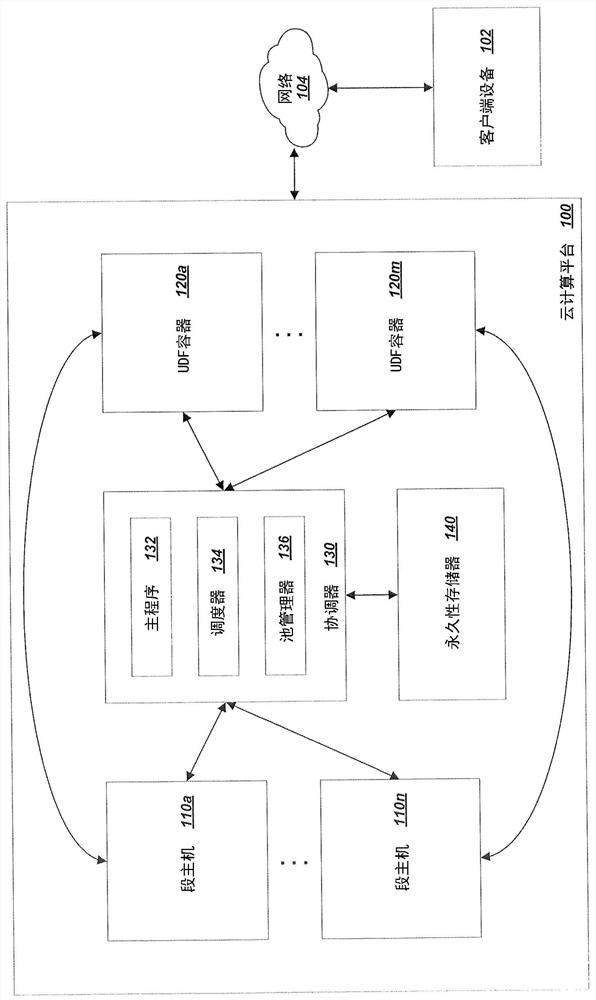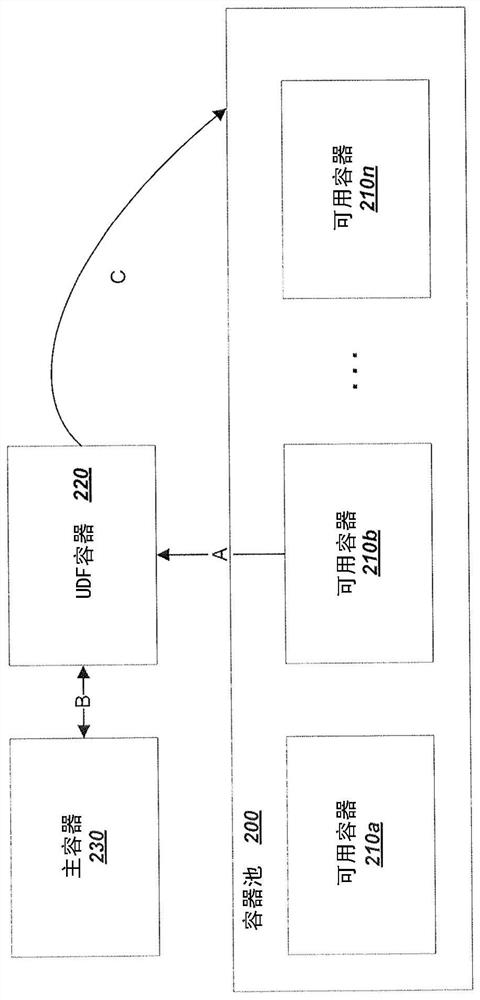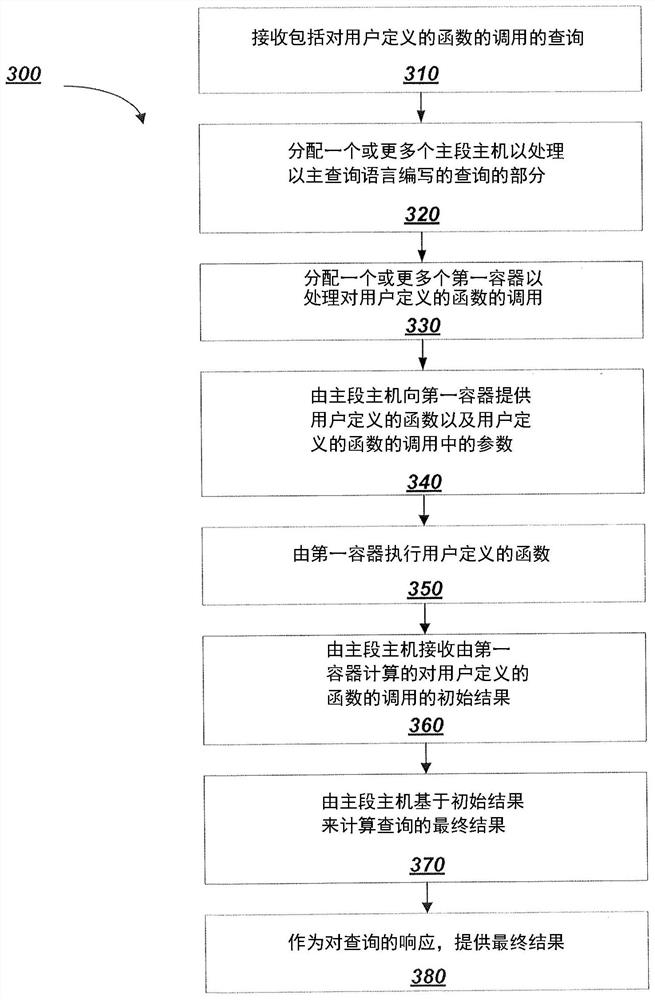Container framework for user-defined functions
A container and function technology, applied in the field of database systems, can solve the problems of consuming computing resources, destroying data, disabling databases, etc.
- Summary
- Abstract
- Description
- Claims
- Application Information
AI Technical Summary
Problems solved by technology
Method used
Image
Examples
Embodiment 1
[0066] Embodiment 1 is a method, comprising:
[0067] receiving a query written in a main query language by a distributed database system installed on a cloud computing platform, wherein the query invokes a user-defined function;
[0068] allocating one or more master segment hosts hosted on the cloud computing platform to process one or more portions of the query written in the master query language;
[0069] allocating one or more first containers to handle calls to user-defined functions in the query;
[0070] providing, by the one or more primary segment hosts, the user-defined function and one or more parameters in the call to the user-defined function to a process assigned to process the user-defined function said one or more first containers of said invocation;
[0071] executing, by said one or more first containers assigned to process said calls to said user-defined functions, said user-defined The function;
[0072] receiving, by the one or more primary segment h...
Embodiment 2
[0075] Embodiment 2 is the method of embodiment 1, wherein allocating the first container to handle the call to the user-defined function comprises:
[0076] The first container is selected from a pool of available containers.
Embodiment 3
[0077] Embodiment 3 is the method described in embodiment 2, further comprising:
[0078] After providing the primary segment host with an initial result of executing the call to the user-defined function, releasing the first container into the pool of available containers.
PUM
 Login to View More
Login to View More Abstract
Description
Claims
Application Information
 Login to View More
Login to View More - R&D
- Intellectual Property
- Life Sciences
- Materials
- Tech Scout
- Unparalleled Data Quality
- Higher Quality Content
- 60% Fewer Hallucinations
Browse by: Latest US Patents, China's latest patents, Technical Efficacy Thesaurus, Application Domain, Technology Topic, Popular Technical Reports.
© 2025 PatSnap. All rights reserved.Legal|Privacy policy|Modern Slavery Act Transparency Statement|Sitemap|About US| Contact US: help@patsnap.com



